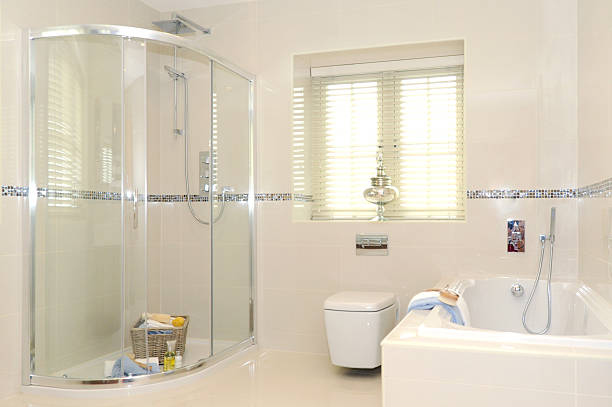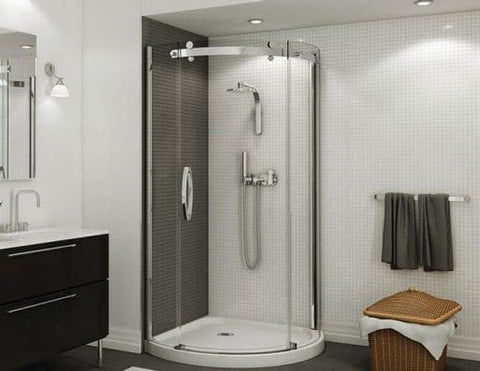How do you actually feel in regards to How to Install a Freestand?

An effective shower installation calls for careful preparation and a great deal of work. In most cases, you will require to do three sorts of tasks: mounting walls, mounting the plumbing, and completing walls.
Prep work
Firstly, you need to pick the type of shower that you wish to set up. It is important to determine whether the selected shower can coping with specific systems and also can regulate a secure level of water with the central heating boiler. Most shower systems nowadays are made to be versatile to various water pressures (such as kept warm water and chilly keys).
It is additionally essential to take into consideration the water stress and the planning of the piping and also drainage for the shower
Different Kinds Of Shower Units
Approach
Depending upon the sort of shower you wish to mount, the shower head must either be suited order to avoid its contact with the water in the bath listed below or the base tray, or it must have a check shutoff.
Prior to starting, it is suggested to mark the settings of the shower head and also control, as well as to intend the pipe-work involved. Furthermore, the water drainage system to remove the drainage will certainly need to be prepared. Both placements of the cable path and also the shower switch will additionally require to be considered if an immediate or electrical shower unit is being set up.
Make use of the instruction guide supplied with the shower device to fit the shower control.Before fitting the pipes that will provide the water to the shower system, it is important to cut off the water system. In order to shield the pipelines, they need to be given a water resistant covering as well as additionally fitted with separating valves. The pipes can then be hidden right into the wall surface and glued over to neaten the general appearance.
Fit the base tray, shower head, and fittings.
Link the primary shower control to the pipelines that will certainly be supplying the water (This may require a female screw thread adapter).
Reconnect the water system as well as examination the pipelines for any leaks, as some may need tightening up.
If you are setting up an electric shower, bear in mind to turn off the power supply before making any electrical connections. Once these connections have been made (there must be support within the instruction manual), the power supply can be changed back on.
Changing Water Stress to Fit Your Shower
The cold water storage tank can be raised to a better elevation (occasionally just 150mm (6inches)) by installation a solid wood assistance underneath it - perhaps made up of struts as well as blockboards. If you select this choice, the primary as well as distribution pipes will also have to be raised to meet the new elevation of the storage tank.
Conversely, a booster pump (a solitary pump or a dual/twin pump) can be fitted. Whichever type is selected, it should be connected into the power supply in order to run.
Piping and also Water drainage
It is best to make use of 15mm size supply pipes, and make the runs to the shower as brief and also straight as feasible so as to maintain maximum stress and also reduce warm loss. Additionally, by minimising making use of joints for pipeline corners, you can decrease the resistance in the circulation of the water. You can accomplish this by bending the pipes rather.
The Majority Of Typical Mistakes
Types Of Shower Enclosure: Which One Is Good For You?
Showers were god made. Common waterfall was the first ever natural shower mankind used. It rinses the bathers clean from head to toe and provide an efficient way of bathing.
Taking inspiration from nature, man designed the indoor shower. A dedicated room was built for the purpose of having a shower and was called the wet room. On the go, this became an essential space in a house.
We have seen people equipping their bathrooms with premium showerhead, soap and toothbrush holders, elegant faucets which give a contemporary look to bathrooms. However, most people do not understand the importance of keeping the bathroom dry and do not concentrate much on shower enclosures.
What are the advantage of using a shower enclosure?
To provide privacy To prevent water from flooding outside the bath area It makes the space more organized Types of shower enclosure doors – Sliding vs Hinged; Framed vs Frameless
Sliding shower doors are ideal as a space saving measure for smaller sized bathrooms. They could consist of 2 or 3 panels. However, it could be more difficult to maintain and clean the sliding tracks. The sliding door could also get stuck or the tracks could get bent. Hinged shower doors provide a larger opening into the wet area and ideal for large sized bathrooms. The hinges, though, could rust and the water may escape the shower door. Shower enclosure doors may also be framed or frameless. Frameless shower doors appear more elegant and have a clean, premium look. Most modern homes opt for the frameless option. They are also easier to maintain. However, they are costlier compared to the framed options. Framed shower doors are cheaper and have an easier installation. The frames may corrode over a period of time. https://buildpro.store/blogs/ideas/4-types-of-shower-enclosure

We were brought to that editorial about How to Install a Shower Enclosure from an associate on a different blog. You should take a moment to promote this blog post if you appreciated it. Thank you so much for your time spent reading it.
Book A Service Call